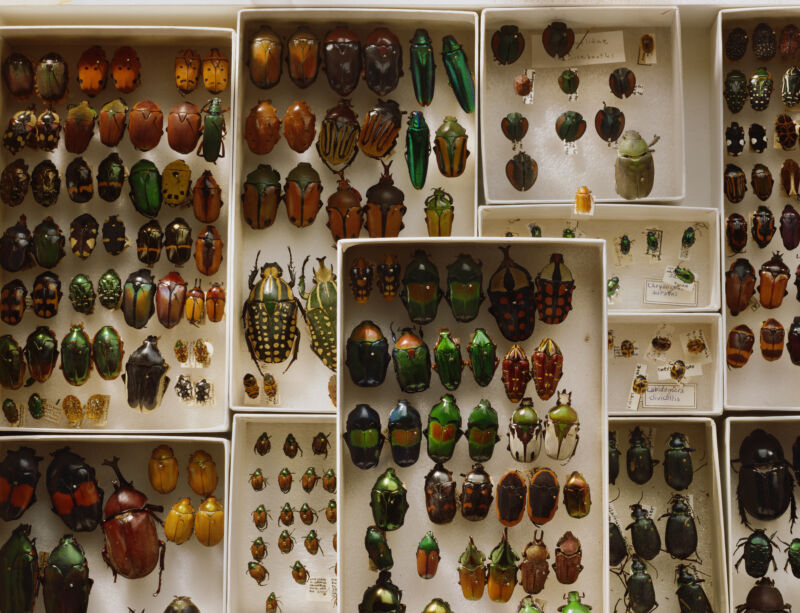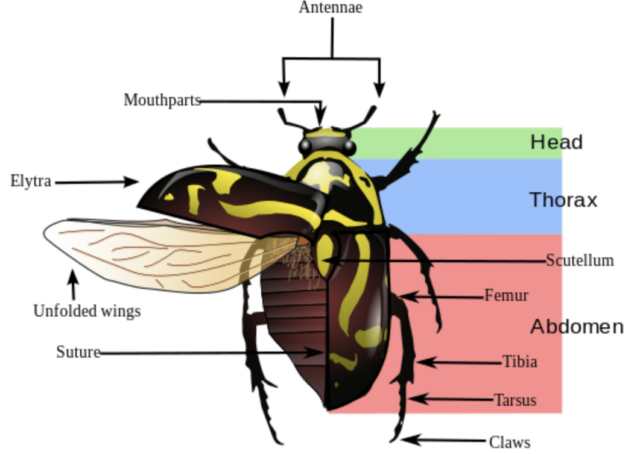The beetles outnumber us —
Diet played a key role in the evolution of the vast beetle family tree.
Leslie Evans Ogden, Knowable Magazine
– Apr 7, 2024 11:02 am UTC

Caroline Chaboo’s eyes light up when she talks about tortoise beetles. Like gems, they exist in myriad bright colors: shiny blue, red, orange, leaf green and transparent flecked with gold. They’re members of a group of 40,000 species of leaf beetles, the Chrysomelidae, one of the most species-rich branches of the vast beetle order, Coleoptera. “You have your weevils, longhorns, and leaf beetles,” she says. “That’s really the trio that dominates beetle diversity.”
An entomologist at the University of Nebraska, Lincoln, Chaboo has long wondered why the kingdom of life is so skewed toward beetles: The tough-bodied creatures make up about a quarter of all animal species. Many biologists have wondered the same thing, for a long time. “Darwin was a beetle collector,” Chaboo notes.

Enlarge / Despite their kaleidoscopic variety, most beetles share the same three-part body plan. The insects’ ability to fold their flight wings, origami-like, under protective forewings called elytra allows beetles to squeeze into rocky crevices and burrow inside trees. Beetles’ knack for thriving in a large range of microhabitats could also help explain their abundance of species, scientists say.
Of the roughly 1 million named insect species on Earth, about 400,000 are beetles. And that’s just the beetles described so far. Scientists typically describe thousands of new species each year. So—why so many beetle species? “We don’t know the precise answer,” says Chaboo. But clues are emerging.
One hypothesis is that there are lots of them because they’ve been around so long. “Beetles are 350 million years old,” says evolutionary biologist and entomologist Duane McKenna of the University of Memphis in Tennessee. That’s a great deal of time in which existing species can speciate, or split into new, distinct genetic lineages. By way of comparison, modern humans have existed for only about 300,000 years.
Yet just because a group of animals is old doesn’t necessarily mean it will have more species. Some very old groups have very few species. Coelacanth fish, for example, have been swimming in the ocean for approximately 360 million years, reaching a maximum of around 90 species and then declining to the two species known to be living today. Similarly, the lizard-like reptile the tuatara is the only living member of a once globally diverse ancient order of reptiles that originated about 250 million years ago.
Another possible explanation for why beetles are so rich in species is that, in addition to being old, they have unusual staying power. “They have survived at least two mass extinctions,” says Cristian Beza-Beza, a University of Minnesota postdoctoral fellow. Indeed, a 2015 study using fossil beetles to explore extinctions as far back as the Permian 284 million years ago concluded that lack of extinction may be at least as important as diversification for explaining beetle species abundance. In past eras, at least, beetles have demonstrated a striking ability to shift their ranges in response to climate change, and this may explain their extinction resilience, the authors hypothesize.
Page: 1 2 Next →
>>> Read full article>>>
Copyright for syndicated content belongs to the linked Source : Ars Technica – https://arstechnica.com/?p=2015249






























